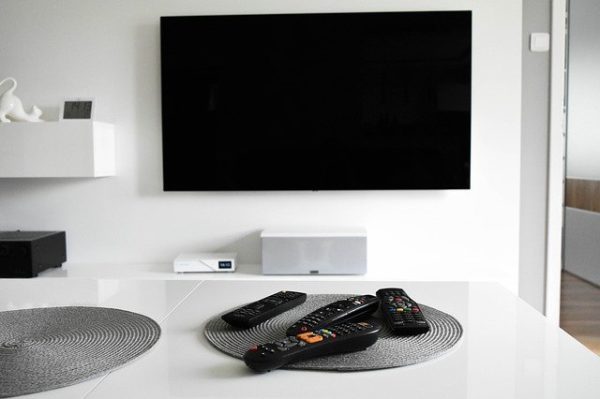Does A Cable TV Use Bandwidth?

Bandwidth is a calculation of the frequencies used by whichever medium they are being consumed. When it comes to broadcast, especially when compressed, digital TV streams are more powerful than analog ones. This tends to work even though, says UFC, many people on a common cable TV distribution viewing the same show at the same time. On one frequency category also known as a channel, the provider will transmit and all the subscription receivers on that node are tuned to the center frequency of the channel. One source, numerous receivers.
Speaking of cables predominantly, bandwidth is usually referred to as the selection of frequencies that are used for transferring the information over data cables. The wide-ranging the bandwidth the more amount of data it can carry. The standard parameter for measuring bandwidth is cycles per second or Hertz (Hz). Some top-notch cable TV service providers in the US including spectrum TV assure their bandwidth remains intact irrespective of the number of people using it simultaneously.
If you only want to know “You having broadband access and cable television, my access is impacted by utilizing TV,” the answer would be: No. Although some cable TV’s capacity in your home is potentially used, the bandwidth is not the restraining factor for your internet access thus far. Cable TV does consume a part of your bandwidth, but then again it could be deemed as a comparatively smaller share of the bandwidth. For the reason that this is broadcast, and the cable signal for every station is transmitted once and for all the consumers to get it.
If you particularly want to know, “Does cable television broadcast use space that would only be reserved by the internet,” when you searched for ‘Does cable TV use bandwidth?’ the answer is going to be: yes. Cable TV does consume a majority of the bandwidth of the network but should be reckoned as a comparatively smaller part of the bandwidth. The cable signals for every channel is only pushed once when it is transmitted, and all viewers access it simultaneously. However, if both viewers simultaneously were viewing the same TV programs on a streaming service i.e. Netflix, the degree would be greater with the overall bandwidth accessed on the network.
However, on the cable TV system, they do consume the bandwidth. But content providers such as Netflix do have not the same advantage. And if you and your neighbor are watching the same thing from the same internet service provider at the same time, you’re both still having your own Netflix data stream. Fortunately, modern internet service provider’s mechanisms are so fast that much of the time the link is possibly idle, facilitating reuse of the frequency. This ensures that the same data stream from your ISP is processed from both your neighbor’s modem and your modem (i.e. cable, not DSL). Your modem only receives packages sent to it and disregards everything for your neighbors. Moreover, Wi-Fi also functions (simplistically speaking) in a similar manner.
Thus, the frequency of bandwidth that is needed to transfer one analog audio-video one-track stream will provide many consumers with a high speed of the internet. This depends, of course, on the high-speed broadband requirements along with the physical state of the networks. One of the many benefits of modern broadcasting (not the web) is that it transmits the material that is being viewed. If nobody is actually watching MTV on your delivery node, so it may not be passed on, and will not be until anyone updates the station and demands the particular video & audio streaming from their device. When the station is changed again, it no longer needs the content stream down the node, and the sending finishes. It means that a TV network like the cable system will sell thousands of channels which includes names like ABC, central comedy, NBC, but at any given time there will usually only be a few hundred participating subscriber recipients on the node.
Conclusive Notes
The aforementioned discussion specifies that cable TV at its maximum uses a few hundred channels to transmit the stations needed by such receivers. For other forms of data, internet-based data often needs validation, which means there must also be an upstream link. The simplest reply to the title is yes, cable TV does consume a small portion of bandwidth.
